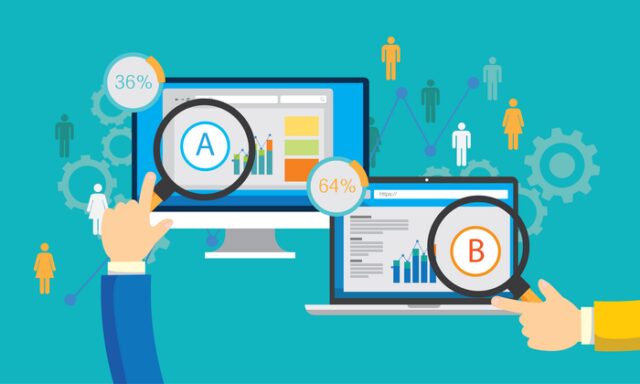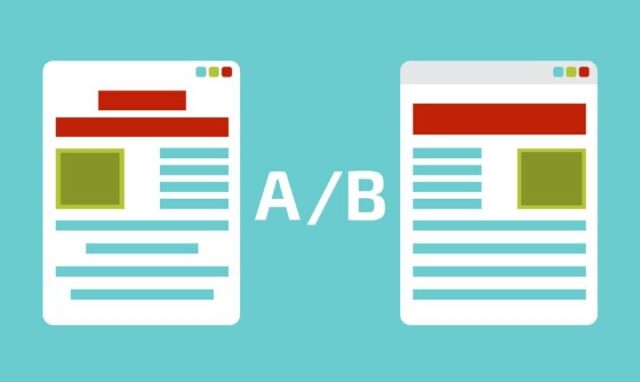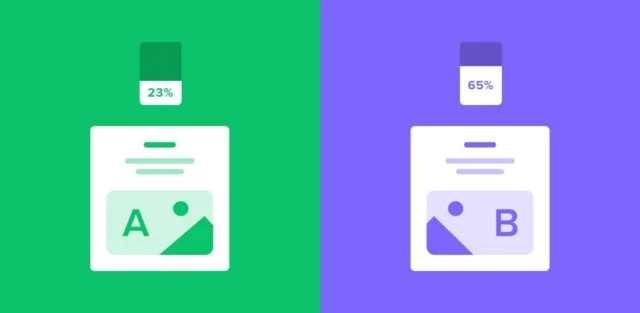
Have you ever heard of bucket testing? No, it’s not quality testing of water buckets. It’s a bit more sophisticated than that. Also called split-run testing or split testing, it’s a research methodology used in product development and design.
It works through “two-sample hypothesis testing,” which you would employ in statistics. A/B testing, as it is also known, measures user engagement and satisfaction. Sounds a tad too technical? It doesn’t have to be. Using A/B testing software is actually pretty straightforward. Allow me to explain.
A/B Testing in Layperson’s Terms

Let’s take an established website as an example. You wish to introduce a new feature – an online store. You are torn between two ways of selling your goods and need to know which one will perform better. Enter A/B testing.
Since you already have an audience — a control group — you can conduct the test. Offer half of your users one type of design (A), and the other half another (B). Test the basic parameters to see which one performs better. In the case of a shop, this will be the number of sales, the number of leads, or even other indirect metrics. The one that provides you with better measurements is the one you should stick with.
This technique takes the guesswork out of website optimization, app development, or any other product design. A/B testing software, games, gadgets, and even SEO strategies is the norm. It applies not only in the digital realm but in almost any line of business where end-user experience counts.
The Benefits of A/B Testing Software
Employing this technique can boost the performance of your business in more ways than one. It’s more than just settling a disagreement or making a binary choice. It’s about continuous improvement and growth.
A/B testing allows you to pinpoint the change you wish to implement. It doesn’t transform the entire system you’re using in one go. Instead, it focuses on one segment — a landing page, a new feature, a plug-in — and lets you tweak it. Over time, you can improve various elements one by one, without jeopardizing the functioning of the whole. It’s a safe route to greater efficiency.
Other benefits include increased conversion rates, reduced bounce rates, and other ways of keeping visitors on your website for as long as possible. You will get clear evidence and see the results of each change. Change your headline, subject line, or call-to-action, and see what happens.
Automated software testing is one process you can use on a regular basis. Marketing campaigns are another area where A/B testing works. Choosing between the tone of voice used in your copy, or the type of SEO you wish to implement are just some of the more obvious examples.
A Step-By-Step Guide

If you’re reading this, chances are you still haven’t performed your first A/B test. In that case, it’s good to stick to the basic framework and follow a few simple steps.
Collecting Data
Gather all the information you need. When it comes to online product performance, you can use Google Analytics, heatmaps, social media parameters, and surveys, among others.
Identifying the Main Goals
Know what you want to achieve. Having clearly defined goals (boosting traffic, improving sales, user retention) is crucial. How will you determine which variation (A or B) is more successful? What are the parameters? Answer those questions first.
Generating Your Test Hypothesis
Brainstorm for ideas. Create a list of potential changes you wish to implement. Once you’ve done this, make sure you prioritize them by expected impact and difficulty of implementation.
Creating Two or More Different Variations
Clearly define each scenario. Focus on a specific product element (landing page, shop, website layout).
Running Your Experiment
It’s time to put the wheels in motion. Let the system assign each of your users or visitors a control variation. A/B testing software takes time to do its magic. Allow for a few weeks to gather enough data.
Getting the Results
Depending on the size of your project, sifting through the data can also take a while. Make sure you only focus on the information relevant to your goal. Pinpointing remains the key to success throughout the testing.
Interpreting the Test Results

Once you have all the data you need, it’s time to analyze it. The A/B testing software of your choice will show you how each variable performed.
It’s important to focus on the statistically significant results. What makes them significant? The fact that they are unlikely to have occurred by chance. In most cases, they’ll be obvious from the get-go. If they’re not, you’ll likely have to rephrase your hypothesis or readjust your goals. Note that some platforms allow you to observe the results in real time. It’s up to you whether you will do this or wait until the end to assess the situation.
Don’t worry if your hypothesis gets disapproved. Some people see this as a failure, but the research is still significant. The results and the gathered data are potent learning tools and may help you avoid mistakes in the future.
If, however, your hypothesis turns out to be accurate, you’ll want to apply changes as soon as possible. Turn A/B testing into a regular thing. Continue with iterations and improvements on the go. It’ll help you make your product more user-centric.
Overcoming Challenges
Of course, no system comes without inherent risks and challenges. A/B testing software is no exception. It requires maintenance and you can potentially end up in a loop of perpetual testing. Also, it’s not something that can measure ease of use, frustration with certain elements, or other critical pain points. It’s not a total solution. It only serves as one (albeit substantial) piece of the puzzle.
Conclusion

Applied correctly, however, it can be a powerful tool that can transform the way you grow your business. A/B testing can eliminate inefficient elements, introduce changes a lot faster, and help you reach a much wider audience.












